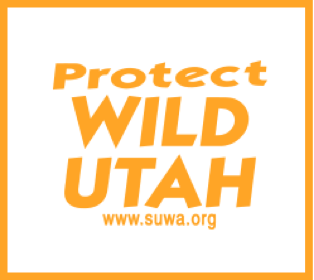|
Southern Utah Wilderness Alliance * For Immediate Release: July 31, 2007 Contact: Stephen Bloch, Southern Utah Wilderness Alliance, (801) 486-3161 x.3981
Over 50,000 Citizens from Across the County Urge BLM to Look More Closely at Impacts from Gas Development to Scenic White River SALT LAKE CITY: The Bureau of Land Management’s Vernal field office has received more that 50,000 public comments in opposition to a plan to lease public lands and drill 60 natural gas wells on federal and state lands just south of Utah’s White River. Outfitters and conservationists are also asking BLM for a comprehensive analysis of the latest development proposal submitted by Denver-based Enduring Resources, LLC one of several submitted by Enduring over the past few years to develop the White River including analysis of the potential cumulative impacts to the natural quiet and beauty of this remote area. The Southern Utah Wilderness Alliance, Natural Resources Defense Council, and The Wilderness Society submitted detailed comments to the BLM on the proposal to heavily develop this largely pristine area. A coalition of local river outfitters, the Outdoor Industry Association, and river-based conservation groups also submitted comments opposing the project as drafted. The state of Utah also commented on the project’s potential impacts to air quality. Copies of these comments are available below. “BLM can’t allow natural gas development to trump all other resources on public lands but that is exactly what’s happening here,” said Stephen Bloch, staff attorney for the Southern Utah Wilderness Alliance. “This project may single handedly change the face of the White River for generations and leave a legacy of marred landscapes, polluted waters, and industrial noise.” “We are seriously concerned that paying visitors will begin to choose other places to spend their time and money if the White River continues to be severely impacted by natural gas development.” said Amy Roberts, Director of Government Affairs for the Outdoor Industry Association. “Ultimately, this project may be the one that ‘breaks the camel’s back’ altering the river experience to such a degree that wilderness characteristics would be eliminated and the river’s recreational opportunities would be severely impacted.” An Outdoor Industry Foundation study released last year demonstrated the economic value of protecting Utah's wild places. That study found that human-powered recreation, including rafting, contributes $5.8 billion annually to Utah's economy and supports 65,000 jobs in the state. In 1999, the BLM recognized that much of the White River and nearby lands within the proposed project area have wilderness qualities and designated the “White River wilderness inventory area.” http://www.access.gpo.gov/blm/utah/pdf/ne140.pdf. BLM described the area this way: “The area’s scenic beauty is exceptional. . . . The deep canyons, high ridges, cliffs, and unique geologic features create spectacular vistas.” BLM also noted that the “John Wesley Powell expedition highlighted a feature in the [White River] unit known as ‘Goblin City,’ which is an area of unique geologic beauty.” The gas development proposed by Enduring would be seen and heard from the Goblin City overlook, a popular hiking trail from the White River. A BLM brochure promoting the White River for canoeists and other river recreation states that the river “is a place to paddle, watch wildlife, and occasionally leave the river for an unforgettable hike. This is one of the quiet places, where solitude and a sense of adventure are still very much a part of the outdoor experience.” All of these resources touted by BLM are at risk if Enduring’s proposal is approved. A copy of the brochure is available below. Plans to potentially designate this area as Wilderness were de-railed in 2003 by the controversial “No More Wilderness” settlement between then-Interior Secretary Norton and then-Utah Governor Leavitt. Conservationists have challenged that settlement in federal court. At the same time that it is reviewing Enduring’s proposal, the BLM is also considering whether to protect the larger White River area through a number of administrative protections, including recommending the White River for designation under the Wild and Scenic Rivers Act and designating it an “area of critical environmental concern.” These other protections being considered as part of the Vernal office’s ongoing land use planning process will almost certainly not be implemented if Enduring’s project is approved and completed. Like most Western states, Utah has a surplus of BLM lands that have been leased for oil and gas development but are not in production, as well as a surplus of applications for permission to drill. For example, at the end of fiscal year 2005 there were just over 4.1 million acres of BLM- managed lands in Utah under lease, but less than 1 million acres in production. In addition, between January 1, 2001 and July 27, 2007, the Utah Division of Oil, Gas and Mining approved 8,042 permits to drill new oil and gas wells in Utah. As of last Friday, July 27, 2007, there were 3,357 approved drill permits from that nearly six-year period that had not yet been drilled. According to Bloch, the Southern Utah Wilderness Alliance and other conservation groups have challenged only a handful of drilling projects fewer than two percent during this period. “The White River currently provides a truly unique wild river experience for our customers. Who would float down a river littered with the sights and sounds of natural gas development? No one.” said Marty Genereux, President of Centennial Canoe Outfitters, Inc. “We need not sacrifice our last wild places for energy security. Lands now open to drilling combined with the West’s supply of renewable energy can take us to a clean, healthy and secure future.” said Sharon Buccino, Director of the Land Program at the Natural Resources Defense Council. “Some places are just too special to drill, and the White River proposed wilderness is one of them,” concluded Suzanne Jones, Regional Director for The Wilderness Society’s Central Rockies Office. BLM has not said when it will announce a decision regarding Enduring’s proposal. >>White River Photos |
|
|

 Southern Utah Wilderness Alliance
Southern Utah Wilderness Alliance
Protecting Utah's Redrock Country
